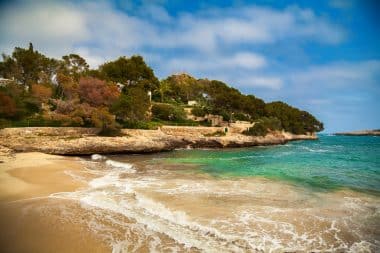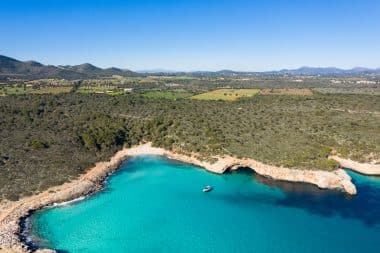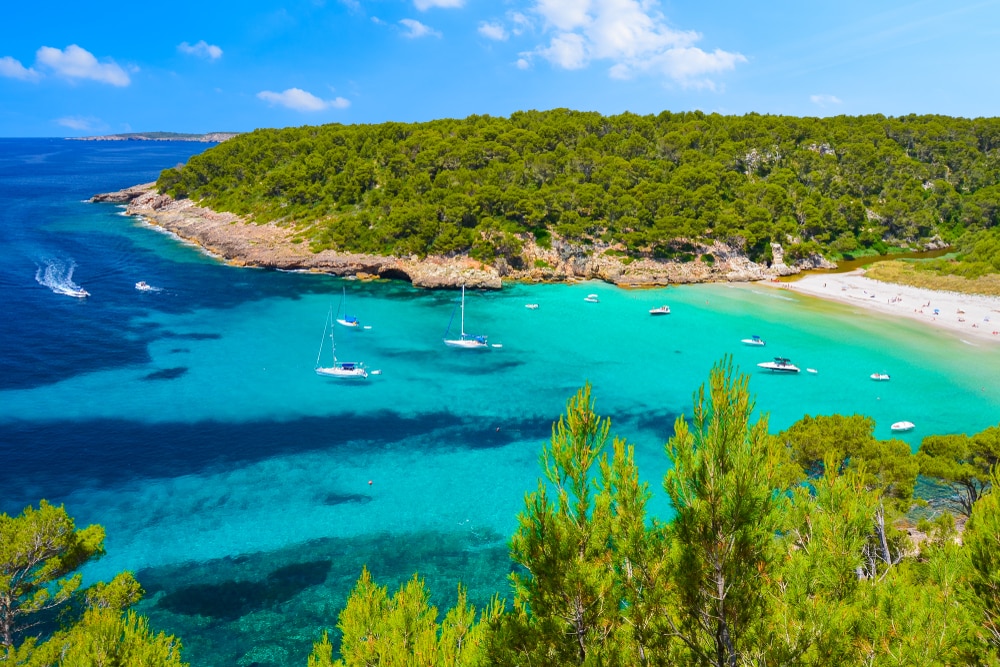The interior of Mallorca offers many attractions, but if you want to be honest, the main attraction for most tourists who visit the island is none other than taking one bath after another on the paradisiacal Mallorcan coast. No wonder: Of the 550 kilometres of coastline, 125 kilometres are accounted for by 348 beaches and bays of all types and conditions. Among them, the coves are the jewels in the crown: small, intimate, many of them wild, hidden… For this reason, exploring the coast in summer to discover them as if they were gems can become the most pleasant adventure.
Discover the best coves in Mallorca

Some of the most impressive coves on the island are located in the resorts of Cala Mondragó, Cala d’Or and Cala Sant Vicenç – resorts with beautiful beaches. You won’t be able to experience the tranquility of being alone in nature here, but you’ll see homes, hotels, and all kinds of services in close proximity to the water – a convenient option to consider if you live nearby. The fantastic sandy beaches of Cala d’Or in the southeast of the island are a convenient choice for those staying in this popular resort town with its marina and lively nightlife.
About 6 km away, which can be traveled by tourist train from Cala d’Or, are Cala Mondragó and Cala S’Amarador, two beautiful beaches surrounded by the pine forests of the Mondragó Natural Park, which are excellent for walks in the surrounding area. However, the bays are located in a very touristy area and are usually very crowded. There are some beach bars and restaurants right on the beach, as well as hotels in the area. Another attractive option, 20 kilometres from Cala d’Or, is Cala Figuera, a curious Y-shaped sea cove that houses a traditional fishing port. The most remarkable thing about this cove is not so much the bathing area, but the fishermen’s cottages by the water, where the llaüts, small fishing boats typical of the Balearic Islands , are always stranded.
In the northwest of the island, near Pollensa, is the small resort of Cala Sant Vicenç. With a variety of accommodation and services right on the beach, the place has retained its old, traditional village charm, and its three beaches with crystal clear waters have the impressive landscape of the Tramuntana mountains as a backdrop.
Sa Calobra, Cala del Moro, Cala S’Almonia… hidden gems in Mallorca.
A big part of the charm of the following coves is their difficult access, which unfortunately does not always mean that they are not crowded. Sheltered between cliffs and rocks, they are as pleasant to swim in as they are to reach. In Sa Calobra, in the northwest of Mallorca, there are two small beaches wedged between rocks and separated by the Torrent de Pareis, a ravine through which a torrent flows. To get there, the first thing you have to do is turn off the main road of the Tramuntana mountains and take the diabolical MA-2141, full of curves and chasms. From the first bay, where you can park, you can only reach the second – larger – bay via a kilometre-long path that leads through a narrow tunnel. Adventure is guaranteed!
Cala del Moro, tucked away between two steep cliffs in the southeast of the island, was one of Mallorca’s best-kept secrets until word got around. For this reason, this narrow cove surrounded by vegetation is very popular in summer, even if access via a dirt path that goes down the cliffs is difficult. Just 9 kilometres away is Cala S’Almonia, which is similarly laid out, but less crowded and even wilder, and is great for snorkelling in the calm, crystal clear waters. One of the attractions is the rock trampolines in the cliffs. To get there, you have to walk about 200 meters up a steep staircase.
Cala Mitjana, Cala Varques and Cala Castell: unspoilt coves to escape the world

For those of you who prefer to travel into the wilderness and forget about everything, a visit to three of the most pristine and pristine bays on the island is recommended. In Cala Mitjana, located on the northwest coast in the Natural Park of the Llevant Peninsula, you will find no other proof of civilization than your car parked next to it. Surrounded by wild vegetation and exposed to the winds and waves of the open sea, this is not a beach for families, but for adventurers and locals.
To the southeast, despite its proximity to the tourist resorts of Porto Cristo and Porto Colom, is Cala Varques, one of the most unspoilt coves in Mallorca, as it is slow to access: from the car park it is a 15-minute walk through pine groves. This means that surrounded by low cliffs, this sandy beach exudes a “hippie” vibe frequented by artisans, jewelry sellers, nudists, and locals.
Finally, in the northwest of Mallorca, Cala Castell stands out, a wild cove at the end of a ravine that can only be reached after a walk of several kilometers, either from Cala Barques or from the Possessió de Ternelles. The town owes its name to the nearby ruins of Castell del Rei, a 13th-century rock castle of Saracen origin.


